Matador Network's Blog, page 599
August 31, 2021
Watch what it’s like to take the world’s shortest commercial flight

Famous Youtuber Tom Scott took the shortest commercial flight in the world on Monday, and it is very short. Like 80 seconds short.
Scott flew on Logan Air, which services the Orkney Islands off northern Scotland. He lifted off the ground from the airport on Papa Westray Island, which has 90 residents, to the airport on Westray island, home to about 200 residents, and just one mile away. All in less than a minute and a half.
The flight between Papa Westray and Westray on a nine-passenger propeller plane costs only £18 ($25). Considering the cost of air travel, you have to wonder if this isn’t also the world’s cheapest commercial flight?
While on the world’s shortest commercial flight, Scott didn’t want to disturb his fellow passengers as he recorded himself talking through his mask, so he stuck to filming and had the very brief flight narrated by Sam Denby of Westover Productions. You can watch it here.
As Denby explains, the Orkney Archipelago is so sparsely populated that the name of the largest island, where most of the 22,000 Orkney residents live, is actually called “Mainland” — even though it’s an island. Papa Westray is one of the northernmost Orkney islands, far from Mainland.
Building bridges to connect these isles would be expensive. While ferries exist, Denby says, they are slow and impractical, so Logan Air is subsidized by the UK government as part of its “public services obligations.” So the $25 only pays for a small portion of Logan Air’s operating fees.
Moreover, the plane hits three islands in its “milk run” route, operating more like a bus. Passengers hoping to get from Papa Westray to Kirkwall on Mainland will first have to stop in Westray. Then again, when Scott was on the flight, the stop in Westray — where one passenger disembarked — took all of two minutes.
While $25 sounds like a lot for a bus, it sure seems like an efficient one. 
The post Watch what it’s like to take the world’s shortest commercial flight appeared first on Matador Network.
7 ways to get outdoors in Music City

Nashville’s reputation as Music City, USA, attracts tourists to the city’s many honky-tonks. While the music and party scenes in Nashville are top-notch, many people overlook the outdoorsy and adventure activities there are to do in the city and its environs. Nashville is surrounded by some impressive scenery, lending itself to gorgeous hikes, exciting water adventures, and tons of outdoor fun. Here are seven of the best outdoor activities in Nashville to help you embrace Music City’s more natural side.
1. Go kayaking on the Cumberland River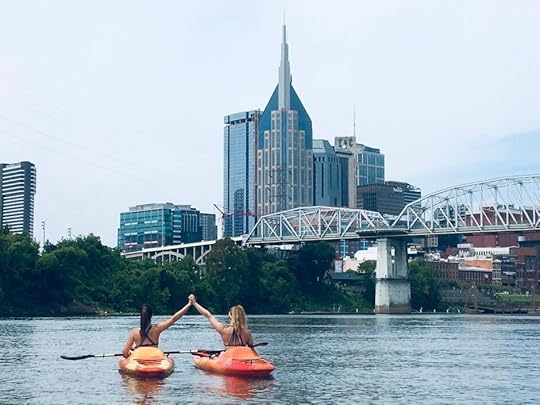
Photo: Cumberland Kayak/Facebook
The Cumberland River, which snakes through Nashville, provides more than a nice backdrop to the city’s skyline. You can also enjoy water activities on the Cumberland, such as stand-up paddleboarding and kayaking. Kayak past downtown Nashville with both Cumberland Kayak and River Queen Voyages. For the more adventurous there’s stand-up paddleboarding with Paddle Up Nashville. They’re still on the Cumberland but further east, in the wooded Rock Harbor Marina. It’s lovely scenery to learn paddleboarding in, plus the secluded marina will prevent onlookers from seeing if you fall off your board into the water.
2. Rent a bike and hit the greenways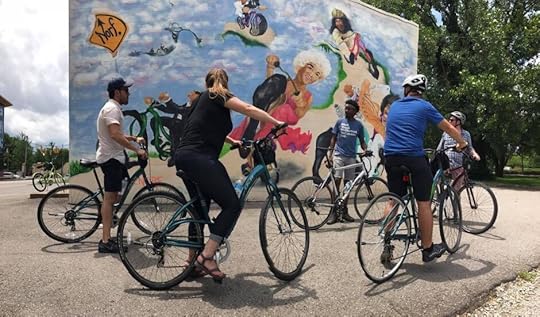
Photo: Green Fleet Bikes/Facebook
Nashville has a network of greenways for cyclists and joggers, allowing you to move from one end of the city to another on bike or foot. You can pass by the city’s prettiest areas via the greenways, like the Cumberland River, Shelby Bottoms, and Two Rivers Park. Visitors to Nashville can easily grab a greenways map, rent a bike, and head off on their own. Green Fleet Bikes in downtown Nashville has city bike rentals available each day, although advance reservations are recommended. If you’d rather not map out your own route, you can join a greenways bike tour with Green Fleet instead. Bike the Greenway also has a pop-up bike rental service that parks itself at the trailhead for whichever greenway they’re operating on that day and guides visitors on a greenway tour.
3. Visit the Nashville Zoo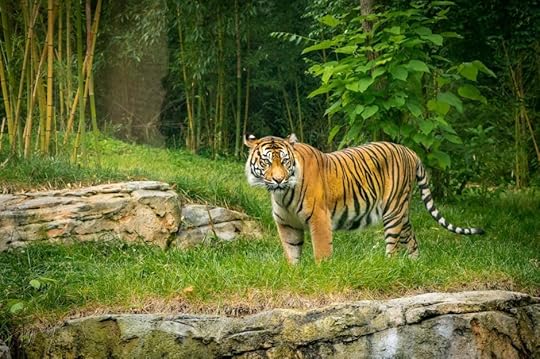
Photo: Deborah Ferrin/Shutterstock
The Nashville Zoo at Grassmere is one of the top family-friendly outdoor activities to do in Music City. The zoological park, with its greenery and gardens, would be a lovely place to explore even if there weren’t any animals. But the Nashville Zoo has creatures and critters of all kinds, who get to roam around in open, natural habitats. It’s the perfect way to spend a day outdoors, and it’s only six miles from downtown. You may even get to pet a kangaroo on your visit.
4. Go ziplining
Photo: Adventureworks/Facebook
The hilly forests that surround Nashville’s metro area are perfect for adventure activities like ziplining. Nothing gets the heart pumping quite like zooming through the trees at 30 miles per hour. Add some hiking and obstacle courses and make a day out of it. Adventureworks at Nashville North is one of the best places to zipline. It’s only a 15-minute drive from downtown, near Whites Creek and the Trails at Fontanel. On the opposite end of the city is The Adventure Park at Nashville, which has treetop obstacle courses in addition to ziplining. Both sites are also situated in beautifully wooded parts of the city that make you feel closer to nature as you zip by them.
5. Go fishing or try flyboarding on Percy Priest Lake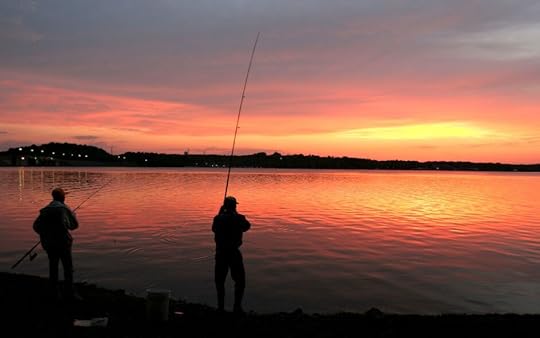
Photo: KenStilger47/Shutterstock
Percy Priest Lake is about eight miles east of downtown Nashville, and one of the most spectacular lakes for fishing, swimming, boating, and watersports in Middle Tennessee. One of the best ways to enjoy Percy Priest is with a fishing trip with Nashville Fishing Charters or Ed Martin’s Striper and Hybrid Fishing Guide Services. Those who don’t consider themselves enthusiastic anglers will have a good time on this trip too, as it’s beginner-friendly and includes breaks for swimming and enjoying the water. As Percy Priest is such a great fishing lake, you’re also likely to catch something — even if it’s your first time.
Fishing isn’t the only activity you can do at Percy Priest Lake. You can also get the adrenaline pumping with a one-hour flyboarding session. Soar over the lake at Nashville FlyBoard’s private dock on Percy Priest. Your session comes with a safety and instruction lesson, so you can take to the skies in no time, even if you’re a beginner. Nashville Flyboard also has Jetpacks and Hoverboards for the really adventurous, but you have to be 18 or older to try those. \
6. Hike through Radnor Lake State Park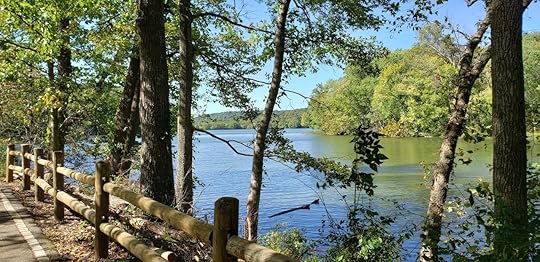
Photo: ShaneFarmer/Shutterstock
With all the hills and forests around Nashville, hiking is one of the top outdoor activities in Nashville. Radnor Lake State Park is one of the prettiest places to hike within Nashville city limits. With 1,200 acres and six hiking trails, this state park will have plenty for you to explore. It’s only a 10-minute drive from downtown too. Not far from Radnor Lake State Park is Percy Warner Park, another large green space and public forest with several hiking trails and bike routes. On the same grounds as Percy Warner, you’ll also find the Cheekwood Estate & Garden, whose botanical gardens are well worth a visit at any time of year.
7. Take a helicopter tour of downtown Nashville
Photo: Monarch Helicopters/Facebook
Downtown Nashville has an impressive and recognizable skyline, and there’s no better way to see it than on a helicopter ride high above the city. Catch all of Nashville’s most famous sites — the Ryman Auditorium, Nissan Stadium, The Country Music Hall of Fame, and the Parthenon at Centennial Park — from above. Whether you’re a born and bred Nashvillian or a visitor to the city, you’ll get a whole new perspective of Music City with the helicopter tour company Monarch Helicopters. 
The post 7 ways to get outdoors in Music City appeared first on Matador Network.
How to raise your kids on the road
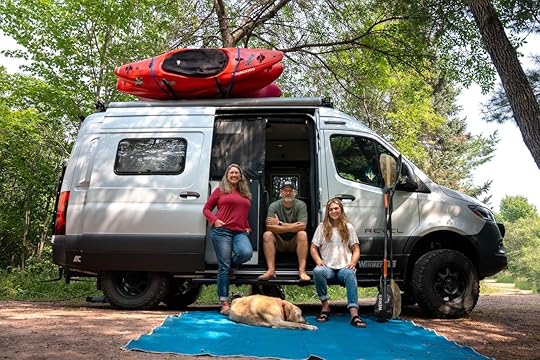
On the first night of driveway camping as a family in our brand-new RV, something strange happened when we gathered inside those fiberglass walls. We found ourselves immersed in an evening of playing cards, telling stories, and bellyaching laughter. Spontaneous, undistracted connection — which seemed so elusive in our daily lives — filled the air. I knew in those first few moments that RVing had something special to offer. Our tiny weekend-warrior-mobile soon turned into a home away from home for the whole family.
While RV travel certainly provides all the ingredients for enriched family life, you don’t just drive off into a made-for-YouTube sunset. Those moments of connection often have to be earned. With structure and intention, you can take your kids on the road and foster great memories, family bonds, life lessons, and unforgettable learning experiences. Here’s how.
Identify your family’s travel mission — and involve kids in the planning.
Photo: Mike Bacanu
Every great adventure starts with a destination in mind — either a physical place or a feeling to achieve. Family trips are group experiences, yet parents often neglect to include their kids in the planning! Unite your family under a common travel goal, such as visiting ten national parks or checking off a must-do list. You’ll ensure your itinerary has experiences that appeal to each person, thereby increasing each member’s commitment and excitement.
Start with a family brainstorming session to develop a wish list of possible travel experiences — there are no wrong suggestions at this stage. Encourage ideas for simple moments, like watching a sunrise together or enjoying a campfire in each state. In addition, include activities to try, places to visit, and things to do, like snow sports, hiking, or attending a music festival.
Next, include school-age children in the process of researching destinations, travel routes, and even costs. These responsibilities prove to be educational and challenging, while making kids even more involved in the trip-planning process. Create the shortlist of travel goals for your next trip or season and post them in a high-visibility spot the whole family will see. Keeping your family’s big-picture mission top of mind will help your group ride out the inevitable hiccups of an extended road trip.
Finally, celebrate the checking off of milestones as you achieve them! (And repeat often.) Add stickers to a state map, or mark the occasion with a special meal.
Find your unique travel rhythm.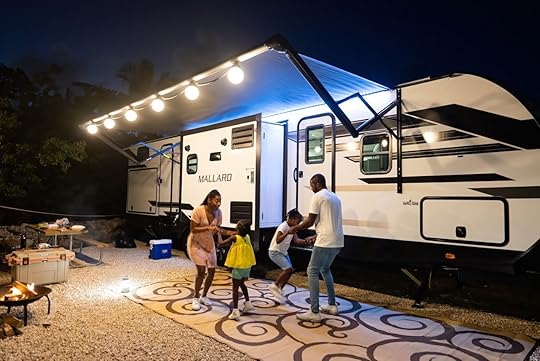
Photo: Tyler Cave
There is no one way to RV. Discover, don’t force, a travel pace that works best for your family, whether that’s moving frequently in short distances or staying put for several days with a longer travel day in between.
When it comes to choosing a family RV, your children’s ages, your work schedule, and your pet situation are just some of the factors that will dictate what style of travel is smoothest for your family. All of these elements will contribute to maximizing the joy of your journey. When you’re in your natural rhythm, everything — and everyone — will be more comfortable.
Let each family member have space to be their best self.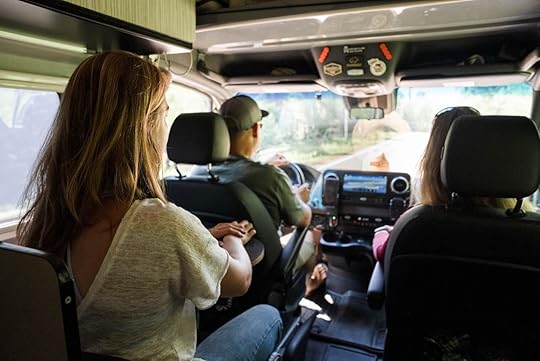
Photo: Ricardo Camargo
It’s just a fact that everyone needs a regular dose of alone time and space. With children, this might not become apparent until a meltdown erupts “out of nowhere.” And while every RV has space constraints, you can foster a healthy diet of alone time by creating small nooks where family members can recharge. Incorporate headphones, space-dividing curtains, fluffy pillows, and cozy blankets to provide comfort and separation. Nooks can even be created outside with a rug or popup play tent.
Scheduling quiet time in the RV is another way to recharge when physical spacing isn’t possible. This can be especially helpful on — or before — a long travel day when everyone will be confined to smaller quarters.
“Home” changes out the window frequently, so create home inside your RV.
Photo: Mike Bacanu
Living in an RV forces a minimalist lifestyle, but don’t go too far when downsizing your whole life into a tiny space. When “home” changes daily, a few comforts like framed photos and sentimental items can help your child — and you! — feel grounded. Older kids may enjoy making their sleeping area their own retreat space, too, when you let them choose decorative touches.
And don’t forget to foster connections with friends and family from afar. Technology tools like shared online photo galleries, a family blog, and video calls help you stay in step with and feel close to loved ones when apart. Incorporate these connections as part of your daily life — in fact, make it a point to schedule them in — not just when a case of homesickness wells up.
Assign responsibilities to create structure and stability.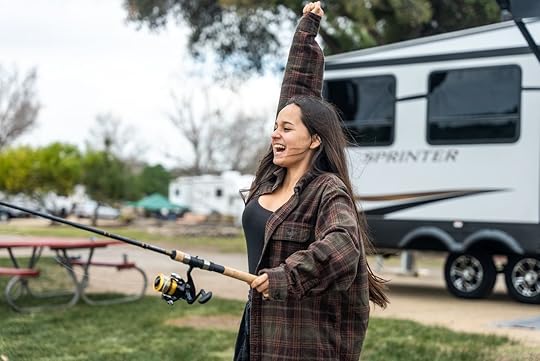
Photo: Tyler Cave
As much as kids need space, they also need structure, though they’ll never tell you that! Establishing daily routines and assigning chores can provide a framework within an otherwise flowy, flexible lifestyle and continue instilling core values like responsibility and teamwork while on the road.
As kids get older, teach them the critical tasks required to set up and pack up camp to ready them for travel adventures in their adult life. They’ll be RVing on their own before you know it, and you get to offer them years of invaluable experience — before they need it.
Take advantage of the best classroom opportunity ever.
Photo: Jenny Farhat
Educational experiences enrich trips of any length and offer a nice balance between mellow downtime at camp and the intense physical activities common on family vacations. Historical destinations and educational tie-ins make RVing the optimal real-world classroom and can easily be incorporated into your road-schooling curriculum. And, really, any destination can be an educational one.
Even better news is that you don’t have to spend a bunch of money on museums to infuse educational experiences into RVing. Websites and apps — like HearHere — can help you find free or low-cost historical, educational, and “off-the-beaten-path” sites. Many of these online tools enhance visits with photos, tips, and background information. Travel days can become less routine and more educational with voice-guided road trip apps like Roadtrippers and GyPSy Guide, too. (It’s kind of like installing a museum in your RV.)
Start with these practices and go from there, learning what works best for you and your family. Remember, RV travel is meant to maximize the joy-filled memories and keep you wanting to adventure together. It’s a way for you and the kids to truly travel different. 
The post RV family adventure: How to raise your kids on the road appeared first on Matador Network.
Zero-waste and eco-minded must-haves for your travel toiletry bag

When traveling, toiletries are essential items in your bag. But these days, there is more to worry about than just what’s allowed in your hand luggage. Toiletry items are some of the top offenders when it comes to plastic waste. Plastic packaging is often not disposed of properly or can be difficult to recycle, even if it is a bio-plastic. With people growing more concerned about their plastic footprint at home and on the road, many small innovative companies have come up with eco-friendly-toiletries that are designed to reduce the waste that ends up in our ocean and landfills.
When I was at the beginning of an eco-conscious lifestyle, I began to interrogate everyday items in search of minimum packaging, quality and sustainably made materials and toxic-free ingredients. I had to drastically reduce my everyday plastic consumption because there wasn’t a recycling program where I lived on the rural coast of Nicaragua. Examining the environmental impact I made as a consumer and pressuring for brand transparency was more powerful than I realized. Some companies falsely position their products as natural or ecological by adding botanical pictures or a few drops of essential oils in their products. You can avoid major green-washing with this list of eco-friendly-toiletries.
Whether you are at the beginning of your low-waste lifestyle or are already environmentally orientated, let this eco-minded product guide set you up for your next plastic-free journey.
ToothbrushesMaking an effort to refuse plastic and adopt eco-friendly-toiletries can start with your toothbrush. Every plastic toothbrush that you’ve ever used in your lifetime probably still exists, which makes the switch to a sustainable toothbrush more essential. No matter what kind of brush you use, the bristles get worn out, bacteria can accumulate and three to four months down the line, your toothbrush needs to be replaced. A toothbrush made of wood or with plant-based materials makes your dental routine more eco-friendly while still getting a great clean.
SeaTurtle Plant-Based Bristles Bamboo Toothbrush
Photo: Sea Turtle LLC
This bamboo brush has 100% plant-based bristles, minimal packaging and contributes to marine conservation with each purchase.
Price: $5.99
Brush, By Bite
Photo: Brush By Bite
You can detach the head of your Brush, by Bite for an easy travel option and sign up for subscriptions for your replacements. Also, good to note that the brush is made from Moso bamboo, which is not a recognized food source by panda bears.
Price: $12
SWAK Toothbrush
Photo: SWAK
This UK based lightweight bio-plastic handle is made from GMO-free sugar and has fun color options to choose from. The replaceable bristle heads are made from miswak wood, which gives this brush a modern twist to an ancient approach to dental hygiene.
Price: $15.37
Tio Brush
Photo: TIO
This Berlin-based design team has many sustainable manual options, but their rotating electric toothbrush is a great choice if you already have an Oral-B electric toothbrush or other compatible models. Their design, with consumption and environment in mind, allows you to buy their replacement toothbrush heads without having to rebuy your electric base.
Price: $5.80
Be. Brush
Photo: Be Brush
Without batteries or cords, this human-powered electric toothbrush is designed with stainless steel to last a lifetime. These creative Portland-based designers have stayed true to reducing waste by creating small replacement heads. If you are in the US and planning to go off-grid, this is your choice.
Price: $99.99
ToothpasteWhen it comes to choosing effective all-natural ingredients in toothpaste, it’s great to look for ones that are cruelty-free, vegan and organic. Chewable toothpaste tablets, which are dry-compacted toothpaste, have grown in popularity because they are easy to carry and create less mess, which makes them the perfect travel-friendly option. A dry toothpaste with lightweight compostable packaging and chemical-free ingredients is the best option as your zero-waste replacement to tubed toothpaste.
Unpaste Tooth Tabs
Photo: Unpaste
You probably weren’t aware that toothpaste could be fluoride-free vegan-friendly, cruelty-free, gluten-free, and preservative-free and still clean your teeth, freshen your mouth and reduce your plastic consumption. But that’s what Unpaste promises!
Price: $15.50
Dent Tabs
Photo: Dent Tabs
Dent Tabs is a dry toothpaste choice with sustainable and ecological values. It contains fluoride for those who need it but is sodium lauryl sulfate-free and packaged in a bio-plastic of renewable plant material (corn-starch). Bio-plastics are theoretically recyclable only if your town has a high-temperature industrial composting site.
Price: $10.39
Dental FlossChoosing plastic-free and plant-based dental floss you can use every day is a must-have for your low-waste personal care routine. Even as small and thin as tooth floss is, nylon-based products can still leach toxic chemicals into the environment. The three options below have higher decomposable ratings, refill options and will help clean between your teeth and raise your eco-consciousness even more. Bonus tip: use your tooth floss as sewing thread to repair any clothing or items instead of trashing them on the road.
Me Mother Earth Floss
Photo: ME MOTHEREARTH
A cute vegan bamboo container makes a lightweight option with refillable charcoal fiber floss that breaks down quick and easy after use.
Price: $11.79
Eco Living Eco Floss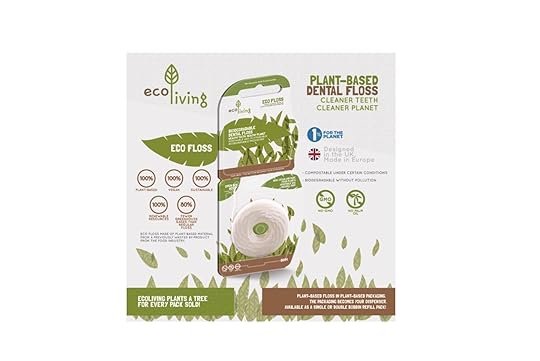
Photo: Eco Living
This EU manufactured floss is part of closing the waste cycle by using a corn-byproduct from the food industry, making sure ingredients are sustainably sourced. They also plant a tree for every purchase made.
Price: $4.50
DeodorantNo one wants to be that smelly traveler on the tram or a public bus. But we also need to minimize plastic waste. So choosing a natural deodorant that is plastic-free and chemical-free can benefit your skin and the environment. These deodorants were picked for their travel-friendly plastic-free packaging, all-natural ingredients, and compact simplicity that will suit your toiletry travel case.
Pack and Leaf Coconut and Vanilla Deodorant
Photo: Pack and Leaf
Choosing cardboard tube packaging designs like Pack and Leaf is a smart choice. They make full and travel-size paraben-free deodorants and donate 10% to protecting marine wildlife.
Price: $18.99
MAGSOL Plastic Free Deodorant
Photo: MAGSOL
If you have sensitive skin, check out this baking soda-free deodorant that has been rated the best with four simple ingredients and compostable packaging.
Price: $15
Wild Deodorant
Photo: Wild/Facebook
Beauty company, Wild, consulted with industrial designers for create the world’s first top zero-waste refillable deodorant made from aluminum and recycled plastic.
Price: $19
Shampoo, conditioner and body washAs you transition into using more zero-waste toiletry products, you’ll find that solid bars or tablet-sized items are smart ways to reduce waste for the environment and weight in your carry-on bag. You can avoid the mini-amenity toiletries in plastic bottles and use soap bars or tablets that will break down with water and pressure, giving you that soapy foam to wash, as usual. There are a lot of simple DIY body wash, shampoo and conditioner recipes on the web to try at home and fill in refillable bottles, but this list of products have less mess and save on space when you set off on your next adventure.
Ben and Anna Shampoo Tablets
Photo: Ben and Anna/Facebook
Ben and Anna is my personal favorite for my travel toiletry shampoo and ticks all the boxes for natural ingredients, plastic-free packaging, and a fresh conscious clean.
Price: $18.24
J.R.LIGGETT’S All-Natural Original Formula Shampoo Bar
Photo: JR Liggett/Facebook
This natural shampoo bar is the equivalent to one 24 ounce shampoo bottle and comes with its own water repellent pouch and TSA compliant.
Price: $13.99
HiBAR Shampoo Bar and Conditioner Bar
Photo: HiBAR
HiBar have made these mini-sized bars that pack snuggly into a travel case and guarantee plastic-free packaging.
Price: $19.90
Ben and Anna Body Wash Tablets
Photo: Ben and Anna
If soap bars are too bulky, then Ben and Anna’s certified natural body wash tablets are a great fit for travel and friendly for the whole family
Price: $5.29
Hair Brushes and CombsHairbrushes usually end up in the regular garbage bin if they’re not made with quality, long-lasting materials. Purchasing eco-friendly toiletries doesn’t need to break the bank, but it does mean choosing more responsibly and sustainably to avoid unnecessary waste. Here’s a couple of quality and environmentally friendly options to help make an easy choice for your hair needs, texture, preference and budget.
Fiora Naturals Hair Detangling Brush
Photo: Fiora Naturals
Made from plant starch, this light-weight, durable, and kid-friendly brush is a great choice for many hair-types and useful for blow-drying.
Price: $9.99
Stainless Steel Metal Hair and Beard Comb
Photo: AhfuLife
A small, foldable, and portable metal comb for hair or beard that fits in your pocket or on your keychain is a must-have on-the-go accessory.
Price: $8.99
Toiletry BagEvery time you buy something for your travels, you can begin to ask yourself: “Is it worth the waste?” By using less, searching for quality materials, and researching eco-friendly companies, you can make filling this bag with eco-friendly-toiletries a breeze.
Sea to Summit Travelling Light Hanging Toiletry Bag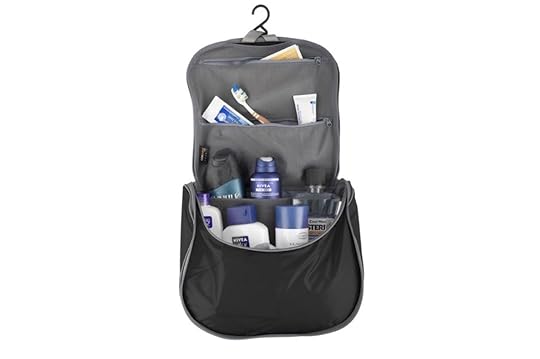
Photo: Sea to Summit/REI
If you like a lightweight durable foldable bag option with zipper compartments that can hang behind a bathroom door or inside a tent, then this one’s for you.
Price: $49.95 
The post Zero-waste and eco-minded must-haves for your travel toiletry bag appeared first on Matador Network.
August 30, 2021
7 luxurious Airbnbs in the Outer Banks for the perfect fall escape
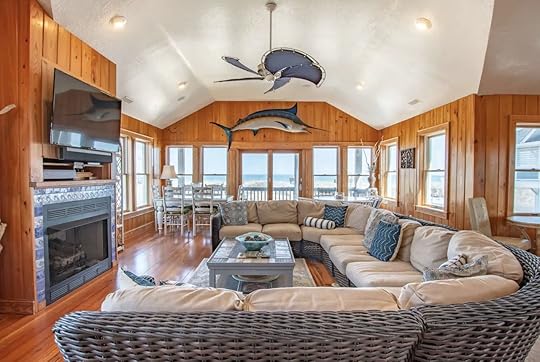
If you’ve ever seen an episode of Netflix’s Outer Banks, you know these barrier islands in North Carolina are the perfect summer destination. What you might not know is that the Outer Banks is also an ideal fall escape for those eager to extend summer while avoiding the crowds that plague beach destinations in June, July, and August. These are the most luxurious Outer Banks Airbnbs to keep on your radar for a fall getaway.
We hope you love the spaces and stays we recommend! Just so you know, Matador may collect a small commission from the links on this page if you decide to book a stay. Listed prices are accurate as of the time of publication. See our full Advertiser Disclosure here.
Beachside home for seven with epic views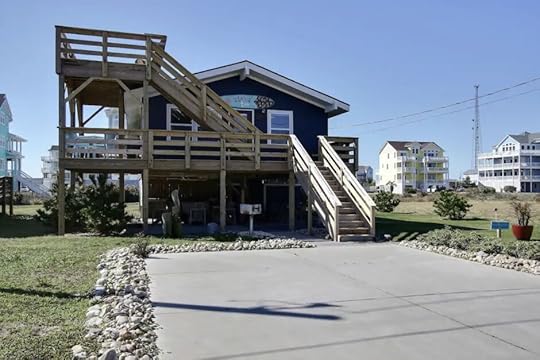
Photo: Airbnb
The Outer Banks in fall might be less hectic than in summer, but if you really want peace and tranquility, head to the small coastal town of Rodanthe. Quieter and more remote than the Outer Banks’ northerly destinations, Rodanthe is known for its easy access to the beach and the sound, giving you unimpeded views of both sunrises and sunsets. The recently-renovated Aloha Too is just three houses away from the ocean, has beach views from the deck, and sleeps seven people.
Seven guests, three bedrooms
Price: $800 per night
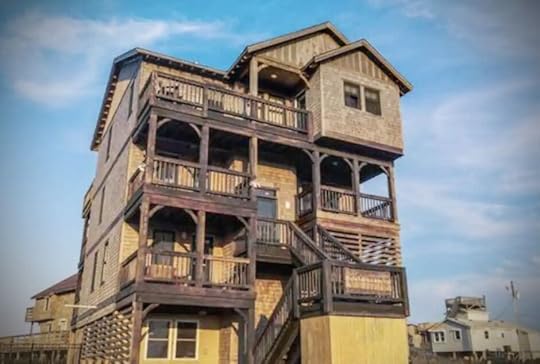
Photo: Airbnb
Renting an Outer Banks Airbnb with a deck is fine. Renting an Airbnb with seven decks is the kind of excess typical of a luxurious stay in the Outer Banks. With seven decks and six bedrooms, this beach house accommodates 13 guests. There’s an outdoor kitchen and barbecue so you can cook dinner with a view of the ocean, and a hot tub on the second-floor deck for those brisk fall days. The house is surrounded on three sides by wetlands and the fourth side by the ocean, so there are stunning views pretty much wherever you look.
Fifteen guests, six bedrooms
Price: $1,201 per night
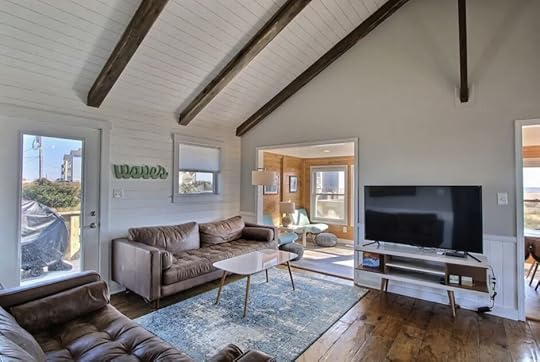
Photo: Airbnb
This four-bedroom house in Rodanthe is just steps away from an uncrowded beach popular for its surfing and fishing. It accommodates nine guests and is pet-friendly. A classic beach cottage, it has a two-tier deck as well as a dining room with a wall of windows, so you can enjoy the view whether you’re inside or outside. The house was also recently renovated, now featuring brand new floors, bathrooms and kitchen.
Nine guests, four bedrooms
Price: $750 per night
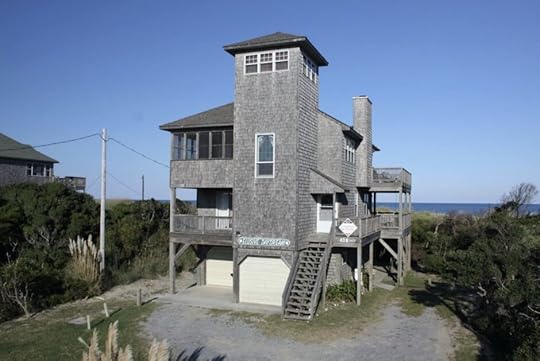
Photo: Airbnb
Located right on Atlantic Beach on Hatteras Island, this four-bedroom Outer Banks Airbnb can accommodate eight people, making it perfect for families. It has a view of the ocean and Cape Hatteras Lighthouse, and if you’re lucky, you might even see dolphins swimming offshore. The house comes equipped with a pool table, foosball table, ping-pong table, outdoor shower, and a master bedroom with jetted bathtub. There’s also a deck attached to the master bedroom with unobstructed views of the island.
Eight guests, four bedrooms
Price: $564 per night
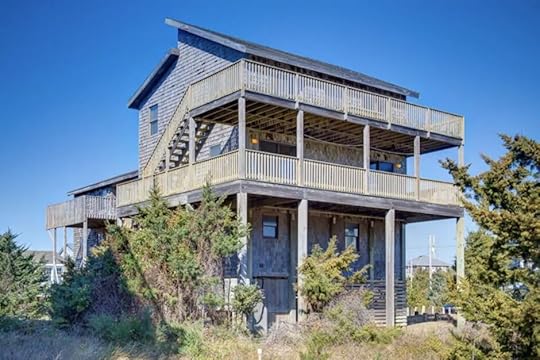
Photo: Airbnb
From the outside, this two-decked Airbnb looks like everything you could possibly want in a beach house. On the inside, it gets even better. The open-concept dining area and living room is perfect for family gatherings, and has large glass doors and windows that offer panoramic views of the ocean. Indeed, since the house accommodates 10 guests, you’ll need all the space you can get. The house is also ideally located steps from the beach in Avon, as well as the popular Bros. Sandwich Shack and Mad Crabber.
Ten guests, four bedrooms
Price: $400 per night

Photo: Airbnb
Treefrog Tower isn’t just a cute name for a vacation house. It’s a pretty accurate descriptor of this Airbnb in Nags Head. Located in the heart of a private nine-acre pine forest on the border of Jockey’s Ridge State Park, this house has access to 450 acres of hiking trails, and beaches on the sound. This apartment-treehouse fusion sits in the treetops, combining a modern interior with its rustic wooded surroundings. As an added bonus, the nearby Nags Head beach is the only beach in the area that allows bonfires.
Two guests, one bedroom
Price: $254 per night
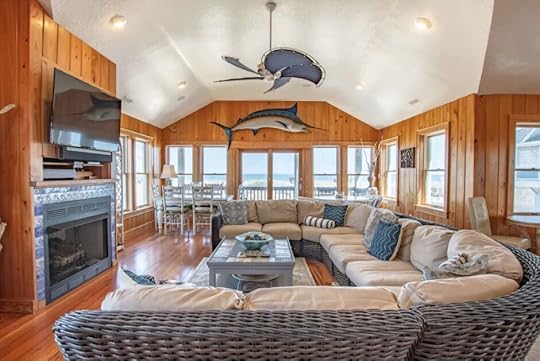
Photo: Airbnb
This one’s for those of you with no intention heading out to the bar to do your socializing. Crawford Cottage in Nags Head is located on an acre of oceanfront property, and can accommodate 16 people across nine bedrooms. It has over 10,000 square feet of living space and over 2,700 square feet of sundecks, covered decks, and porches. There’s also a private indoor heated pool, outdoor pool and hot tub, pool table, foosball table, and even a private dune. It also has an elevator, making it accessible to disabled guests. 
Sixteen guests, nine bedrooms
Price: $1,100 per night
The post 7 luxurious Airbnbs in the Outer Banks for the perfect fall escape appeared first on Matador Network.
Ecuador’s dazzling, hidden Andean lakes are just a day trip from Quito

Quito is a brightly hued city in the highlands of Ecuador that is drawing ever more visitors, most of whom use the city as a base for day trips to sprawling Andean landscapes — most notably Cotopaxi National Park, one of Ecuador’s stunning highland preserves. But the park is just a glimpse of the spectacular landscapes hidden within the Andean highlands. The region is splashed with hundreds of remote, scenic lakes, many of them volcanic origin. And these startlingly beautiful bodies of water are perhaps Ecuador’s best-kept secret.
Mojanda Lakes, Otavalo’s lesser-known lakes
Photo: Santiago Cornejo/Shutterstock
South of Otavalo, home to a beloved and colorful textile market, is a trio of less-visited, mind-bogglingly beautiful lakes called the Lagunas de Mojanda. Due to their remote, dirt-road access, they are the least frequented lakes on this list. But their expansive waters surrounded by Ecuador’s high-altitude paramo grasslands are a sight worth going out of the way for.
The three lakes are named in the native indigenous language as Caricocha (Man Lake), Huarmicocha (Woman Lake), and Yanacocha (Black Lake). Each is independently breathtaking, with layers upon layers of natural colors — from inky interior waters to clear Caribbean-like beaches, and all of it framed by the mysterious and cloudy Andean peaks.
Among the best ways to appreciate the cluster of lakes is through hiking or camping. The area surrounding the Mojanda Lakes is one of the few officially approved wild camping sites in Ecuador. However, the Andean moorlands can be both windy and cold with unpredictable weather. Therefore, wild campers should be adequately experienced and prepared for remote high-altitude camping before pitching a tent here. Otherwise, the three-hour hike up the Fuya Fuya volcano is suitable for most ability levels. It offers expansive views of all three lakes and the surrounding Imbabura, Cotacachi, and Cayambe volcanos.
Quilotoa Crater Lake, a jewel-colored volcanic lake
Photo: SL-Photography/Shutterstock
Hidden away in the Andes range about three hours southwest of Quito, Quilotoa lagoon is a two-mile-wide caldera that offers a majestic perspective of the Ring of Fire (the 25,000-mile-long string of volcanoes along the Pacific Rim in the Americas and Asia). The jewel-colored lake sits in a bowl-like crater crowned by a fringe of jagged peaks formed during its eruption some 3000 years ago.
The vibrant blue and green hues of the water are a result from continually dissolving volcanic minerals. Still, the seemingly color-changing properties of the lake are mostly credited to variations in overhead sun and cloud cover. The acidic content of the water doesn’t invite an abundance of species — it’s mainly comprised of algae and microorganisms — and is not suitable for swimming. Even so, the calm, majestic pool is ideal for a heavenly kayaking experience. But, perhaps the most significant draw for adventure-minded folks is the variety of hiking, horseback riding, and llama trekking trails that flank the lake.
However, the Quilotoa lake is perched a dizzying 12,000 feet up in the Andean mountains, so acclimation and appropriate consideration for high-altitude hiking are essential. The main trails include the multi-day Quilotoa Traverse, the four to five-hour Quilotoa Loop tracing the crater’s rim, and the steep 30-minute downhill hike from the viewpoint to the water’s surface.
San Pablo Lake, a local favorite near the Otavalo Textile Market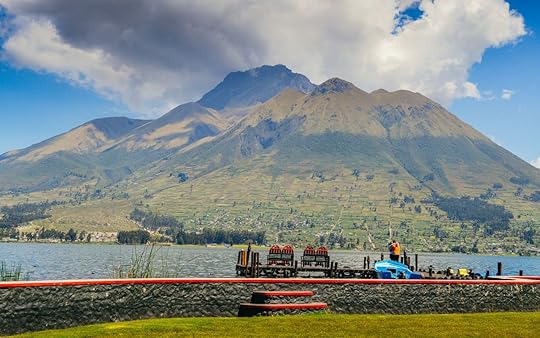
Photo: Alexandre Rotenberg/Shutterstock
Heading northeast of Quito en route to the Otavalo textile market mentioned above lies the glistening San Pablo Lake. The surrounding area juxtaposes rolling crop fields and towering volcanoes with a sprinkling of hostels dotted in between. And part of this lake’s allure is the distinctly local vibe compared to others in the area. It’s a place to pause for nostalgia’s sake to relish in the scenes of families rowing traditional reed boats, children learning to sail, farmers bringing their cows to the shoreline, and perhaps even a hot air balloon drifting by. Then, come September, the locals gleefully take an annual plunge into the frigid water during the traditional Yamor Festival — a sight definitely worth seeing.
Alongside the cultural charm, San Pablo Lake is also a nature enthusiast’s dream. It’s a bountiful destination for hiking, biking, rowing, and horseback riding. Beyond the lake, explorers can also seek out trails to the hovering Imbabura Volcano, the hidden Peguche Waterfall, or the thousand-year-old tree named El Lechero.
In addition, the 1400-acre San Pablo Lake harbors a vibrant array of birds and aquatic species that beckon birding enthusiasts. They come here to glimpse the Andean condor, blue-billed Andean ruddy duck, herons, coots, sandpipers, and dozens of hummingbird species. But that’s not all. The nearby Condor Park is a must-see, particularly for anyone curious about birds of prey. It’s a bird sanctuary dedicated to the rescue and conservation of owls, hawks, falcons, and condors.
Cuicocha Crater Lake, a bubbling, unusual paradise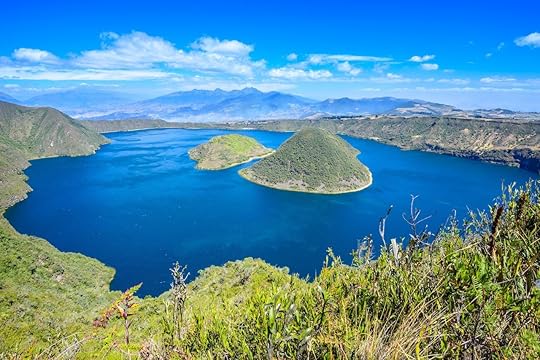
Photo: Noradoa/Shutterstock
About 30 minutes west of Otavalo and nearly four hours from Quito, a day trip to the Cuicocha Crater Lake is the farthest one from the city. It’s a lake destination especially desirable for the conservationists at heart, as it lies within the Cotacachi-Cayapas National Reserve. It’s one of nine ecological reserves in Ecuador, dedicated explicitly to conserving biological diversity. And for this area, it means the volcanic grasslands, Cuicocha Lake, and islands are among the most pristine in the Andes.
Cuicocha is a deep and sprawling crater lake with impressive green cliff walls and two forested lava dome islands formed during a volcanic explosion thousands of years ago. The islands are protected from foot traffic, and the water is too alkaline for swimming, but Cuicocha Lake is well-known for its outstanding boat tours. The tours navigate through the fascinatingly clear and still bubbling waters before bobbing through canals and skirting along the island shores in search of wildlife.
Miraculously, despite their isolation within an inhospitable lake, the islands thrive with rare and endemic species including frogs, crayfish, snakes, and insects. But Cuicocha Lake’s most famous inhabitant is the silvery grebe, a diving bird only found in South American freshwater environments exceeding a whopping 13,000 feet in elevation.
The boat tour is inexpensive and lasts less than an hour, making it the perfect complement to the spectacular hike that loops around the crater rim. The Cuicocha Lake Trail is seven miles long and can take four to six hours to complete. It’s particularly appreciated for its isolation and immersion into alternating paramo and forested landscapes beneath the Cotacachi Volcano. And of course, for the elevated, panoramic views of the Cuichocha Lake and islands. 
The post Ecuador’s dazzling, hidden Andean lakes are just a day trip from Quito appeared first on Matador Network.
The E.U. removed the United States from its safe travel list. Here’s what to expect.
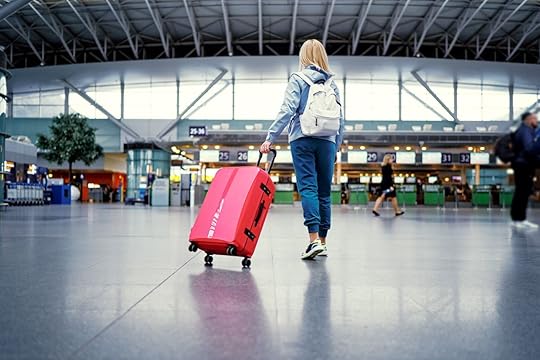
If you were celebrating the end of the year-long ban on American tourists and planning to vacation in Europe this fall, you may soon be too late. On Monday, the European Union dropped the United States and five other countries from its safe travel list, Reuters reported.
Visitors to the European Union from countries on the safe list have enjoyed much more freedom of movement during the pandemic, as they have generally been exempt from quarantine when they arrive in any one of the 27 E.U. member countries — as long as they show a recent negative test or proof of vaccination.
Back in June, the European Union had lifted its travel ban against American tourists. Throughout the summer, visitors from the US who are vaccinated or test negative have enjoyed relatively easy travel throughout the European Union. And while individual experiences have varied, many travelers found it even easier to enter the EU than expected.
Residents of countries that are not on the coveted safe list might be subject to extended quarantine or testing — or find their travel plans totally derailed by bans on all non-essential travel. The restrictions suggested on Monday are not yet mandatory, and the European Council is leaving it up to individual member countries to either impose or ignore their recommendations.
While the June relaxation of restrictions had coincided with a drop in COVID cases, and European member countries were eager to for the much-needed boost that tourism would give their economies, the Delta variant is now sweeping through the United States. Given the dangerous surges in infection rates in the United States, the E.U. has decided to rethink its plans to welcome American tourists.
The New York Times reports that, “The threshold for being on the E.U. “safe travel” list is having fewer than 75 new Covid-19 cases daily per 100,000 people over the previous 14 days,” and that the “United States has an infection rate well above that threshold.”
Israel, Kosovo, Lebanon, Montenegro join the United States on the list of countries who will no longer enjoy freedom of movement in the E.U. Meanwhile, European travelers are still banned from traveling freely to the United States, despite the fact that the European Union has higher vaccination rates than America.
MoreNewsThese countries will require a vaccine booster shot to get inThe post The E.U. removed the United States from its safe travel list. Here’s what to expect. appeared first on Matador Network.
A fall foliage expert’s predictions for New England leaf peeping in 2021
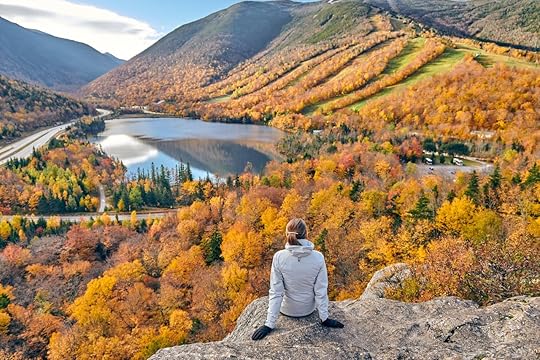
Transitioning from summer into the colder months can feel like turning the corner and getting socked in the gut with a swift, icy fist. But at least the changing fall colors give us something nice to look at — especially this year.
According Jim Salge, the fall foliage expert for Yankee Magazine and a former meteorologist at Mount Washington Observatory, the fall colors in New England in 2021 are shaping up to be particularly impressive. I caught up with Salge for more insight about how the forecasts work and what will make 2021 leaf-peeping season special.
How leaf-peeping forecasts are madeSo how, exactly, does one actually predict the fall foliage? Salge looks at all the factors that will determine how the foliage will look this fall, including last winter’s strangely fluctuating temperatures, a dry spring, wet summer, and the potential impact from leaf fungus and moths.
Unsurprisingly, the most important factor is the state of the forest.
“The health of the forest is the biggest determining factor in assessing the foliage season ahead,” Salge says. “While the leaves directly respond to the changing light and temperatures in the fall, every year is different. Excessive summer heat, drought and even deluge will impact the fall colors, and outbreaks of hungry bugs and leaf fungus need to be considered as well.”
In 2021, the forest is quite healthy and well-watered. In terms of the weather, days in the fall need to have warm and sunny days with cool nights for the the green chlorophyll to fade and the red pigments to form. (Salge describes the red pigment “as a sort of sunscreen for the transforming leaves.”)
Salge broke his prediction down between northern New England and central and southern New England. Here’s what to expect.
Northern New EnglandThe optimal time for leaf-peeping: Late September
What impacts this year’s leaves: Dry spring and not enough rain in the summer will make the trees turn earlier than usual from cold fronts.
How long you have: Get out there early if you want to catch any colorful foliage, because it’s expected to be short-lived this year.
Central and Southern New EnglandThe optimal time for leaf-peeping: October
What impacts this year’s leaves: A wet summer and a warm forecast will make up for pockets of insect and fungus damage.
How long you have: Go ahead and take your time — peak colors will go south from northern New England throughout October.
The post A fall foliage expert’s predictions for New England leaf peeping in 2021 appeared first on Matador Network.
TSA finds raw chicken circling on baggage claim carousel

While you were worried about how much conditioner and toothpaste you were packing in your carry-on, someone decided that traveling with an unreliable cooler full of raw chicken was perfectly normal.
Last week, the US Transportation Security Administration (TSA) shared a video on Instagram showing raw chicken parts circling around the baggage carousel among other pieces of luggage. Even more disgusting: the raw chicken parts were not even wrapped.
TSA wrote on the Insta post, “Can chickens fly? Well… assuredly, no poultry is flying like this. We hear at one time these wings and thighs were cooped up in a cooler. Somewhere between baggage and the carousel, they became free range.”
Voir cette publication sur InstagramUne publication partagée par Travel Tips & Dad Joke Hits 🎶 (@tsa)
The post has accumulated over 400,000 views and more than 1,000 comments in the past few days. TSA has not commented on how unpacked, seemingly frozen, raw chicken ended up alongside other passengers’ suitcases, but they had a lot of fun crafting a caption. They finished their Instagram post with the following pun fest: “If you are pecking around the internet for travel tidbits, nest time reach out to our hens and roosters at #AskTSA. They’ll take your raw travel questions and cook out an egg-cellent answer.”
According to TSA’s website, passengers can bring frozen foods in their carry-on or checked bags as long as the food is packaged with ice or ice packs in a cooler or other containers. The ice packs must be completely frozen; if they aren’t, the food will not be permitted. Some food is not allowed through airport security, however.
The post TSA finds raw chicken circling on baggage claim carousel appeared first on Matador Network.
All the gear you need to have epic outdoor adventures with your dog

Outdoor adventures are always better with your best friend. Thing is, dogs don’t fit so well into puffy jackets and mummy sleeping bags. To keep your pup happy and comfortable on the trail, stock up on this outdoor and hiking gear for dogs. All items are available through REI, meaning you can boost your annual dividend while stocking your dog with adventure gear.
We hope you love the hiking gear for dogs we recommend! Just so you know, Matador may collect a small commission from the links on this page if you decide to make a purchase. See our full Advertiser Disclosure here.
Ruffwear Front Range Dog Day Pack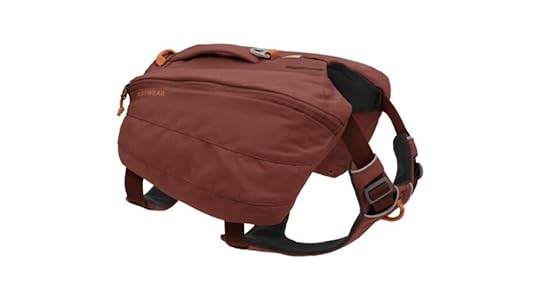
Photo: REI
A true trail pup carries his weight on backpacking trips. The Ruffwear Front Range Dog Day Pack is the best way for her to do so. This pack can hold essentials like water and treats, along with small items that may not fit into your pocket. The accessories loop stores poo bags for your benefit, and the pack is padded and cut to seamlessly fit a dog’s frame. As a bonus, the Ruffwear dog day pack is lined with tonal reflective coating to help you keep an eye on the dog in low-light conditions.
Price: $79.95
Ruffwear Float Coat Dog Life Jacket
Photo: REI
When SUPing, kayaking, rafting, or simply swimming are involved in your outdoor adventures, a dog life jacket is in order. The Ruffwear Float Coat Dog Life Jacket is top of the line and guaranteed to help your pup float should she become embedded in a current or patch of deep lake water. It’s easy to clip on and comfortable for the dog to wear, and contains a clip for a light if you’re out when the sun doesn’t sit perfectly overhead.
Price: $89.95
Ruffwear Front Range Dog Harness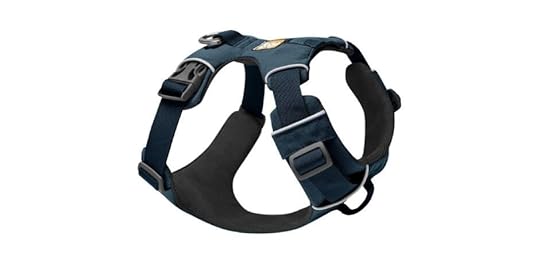
Photo: REI
For day hikes when a full dog hiking pack isn’t necessary, opt for the Ruffwear Front Range Dog Harness. It’s cut and flexibility allow the pup to maneuver like an athlete while giving you control of where he goes. It’s comfortable, durable, and enjoys being on the trail as much as your dog does.
Price: $39.95
ADS Trail Dog First Aid Kit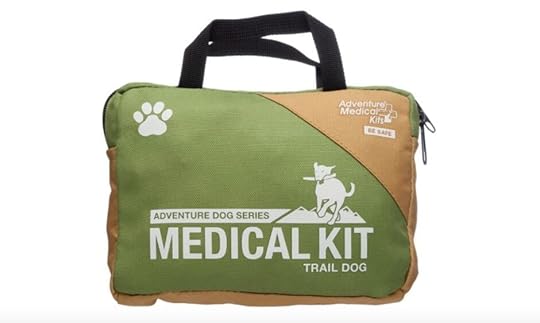
Photo: REI
Ticks. Scrapes. And the dreaded “prickly-in-the-paw.” Something small but painful can go wrong at any moment on the trail. The ADS Trail Dog First Aid Kit ensures that you can treat your dog quickly and efficiently and get back on with the adventure. This dog first aid kit includes bandages, wraps, a tick remover, and other handy gadgets to keep your pup moving in comfort.
Price: $25
Ruffwear Roamer Dog Leash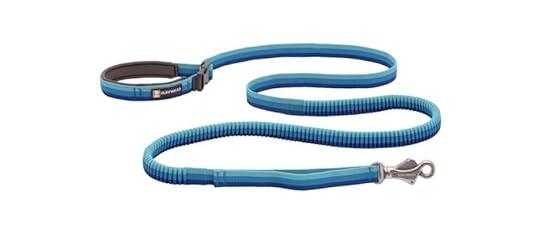
Photo: REI
The Ruffwear Roamer Dog Leash is the top-rated trail leash on the market, and it’s from the world’s premier producer of gear for vagabonding pups. Think of this leash as “trail buoyancy.” The leash is there to keep the dog safe and attached to you, while providing the pup the freedom to move along the trail without feeling like there’s something dragging him down the whole time. Its elastic webbing stretches to provide more freedom but can recoiled by the handler when a steep cliff or off-leash prowler comes into sight. It comes with a Swiveling Talon Clip collar attachment that won’t come undone unless you make it so.
Price: $39.99
Nite Ize Nitehowl Rechargeable LED Safety Necklace
Photo: REI
Letting the dogs range the campsite is more dangerous at night when you can’t see them every step of the way. The Nite Ize Nitehowl Rechargeable LED Safety Necklace solves the problem. The pup gains a light around the neck to not only illuminate their way, but help you track the movements as they happen. This necklace is also perfect for that afternoon hike in a particularly beautiful area, when the urge to stick around for that golden hour photo over the lake or to watch the sunset over the peaks overtakes the original plan to be back at the trailhead before dusk.
Price: $20
Ruffwear Grip Trex Dog Boots
Photo: REI
The Ruffwear Grip Trex Dog Boots are perfect for snowshoeing excursions or hikes across scree and rock fields that could tear up your dog’s paws. These booties fit comfortable and provide all the traction and support dogs need for a day in the field. The boots are easy on/easy off and a cinch to adjust on the fly. Plus, your dog will look quite hardcore with his own hiking boots on in your photos.
Price: $37.50
Ruffwear Dirtbag Seat Cover
Photo: REI
Mud happens. So do a lot of other dirty and messy things. The Ruffwear Dirtbag Seat Cover ensures that whatever does happen on the trail stays off the backseats of your car. What’s cool about this dog car seat cover is that, in addition to its basic functionality, it’s comfortable and tear-resistant design doubles as a mobile dog bed for your pup. The dog will come to know its smell and his smell upon it and adopt it as their own, which can make long rides home that much more pleasant.
Price: $79.95
YETI Trailhead Dog Bed
Photo: REI
Photo: camping-dog-bed-hiking-gear-for-dogs.jpg
Credit:
A dog bed also comes in handy when camping. The YETI Trailhead Dog Bed is ideal because it packs up small, is washable and waterproof, and gives your pup a place to rest while you sit around the campfire telling late-night stories. This camping dog bed fits next to tents (or inside large ones) and is ideal in the back of campervans, RVs, and cars. And because it’s made by YETI, you and your pup can rest easy knowing that it’s built to last a lifetime.
Price: $300
GivePet Off-Leash Leisure Soft Dog Treats
Photo: REI
Good dogs deserve treats. The GivePet Off-Leash Leisure Soft Dog Treats fit the bill perfectly for camping and are also an essential piece of hiking gear for dogs. Your purchase supports shelter dogs, and rewards yours with a tasty treat after a day on the trail and also helps a dog led astray by a scent find his way back to camp. 
Price: $9
More like thisParks + WildernessThe 7 best US national parks to experience with your dogThe post All the gear you need to have epic outdoor adventures with your dog appeared first on Matador Network.
Matador Network's Blog
- Matador Network's profile
- 6 followers



